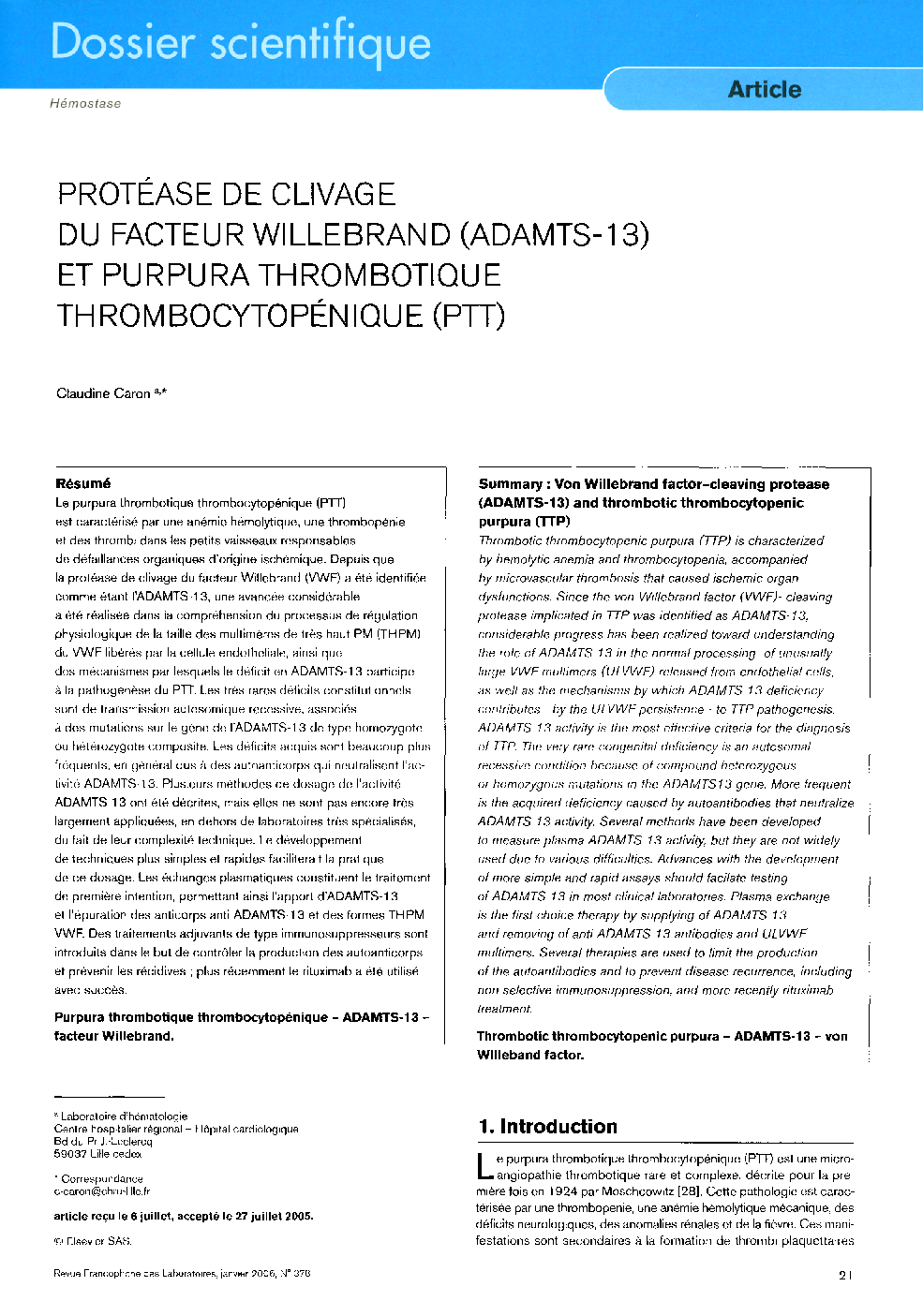| Article ID | Journal | Published Year | Pages | File Type |
|---|---|---|---|---|
| 7666800 | Revue Francophone des Laboratoires | 2006 | 8 Pages |
Abstract
Thrombotic thrombocytopenic purpura (TTP) is characterized by hemolytic anemia and thrombocytopenia, accompanied by microvascular thrombosis that caused ischemic organ dysfunctions. Since the von Willebrand factor (VWF)-cleaving protease implicated in TTP was identified as ADAMTS-13, considerable progress has been realized toward understanding the role of ADAMTS-13 in the normal processing of unusually large VWF multimers (ULVWF) released from endothelial cells, as well as the mechanisms by which ADAMTS-13 deficiency contributes-by the ULVWF persistence-to TTP pathogenesis. ADAMTS-13 activity is the most effective criteria for the diagnosis of TTP. The very rare congenital deficiency is an autosomal recessive condition because of compound heterozygous or homozygous mutations in the ADAMTS 13 gene. More frequent is the acquired deficiency caused by autoantibodies that neutralize ADAMTS-13 activity. Several methods have been developed to measure plasma ADAMTS-13 activity, but they are not widely used due to various difficulties. Advances with the development of more simple and rapid assays should facilate testing of ADAMTS-13 in most clinical laboratories. Plasma exchange is the first-choice therapy by supplying of ADAMTS-13 and removing of anti ADAMTS-13 antibodies and ULVWF multimers. Several therapies are used to limit the production of the autoantibodies and to prevent disease recurrence, including non selective immunosuppression, and more recently rituximab treatment.
Related Topics
Physical Sciences and Engineering
Chemistry
Analytical Chemistry
Authors
Claudine Caron,
